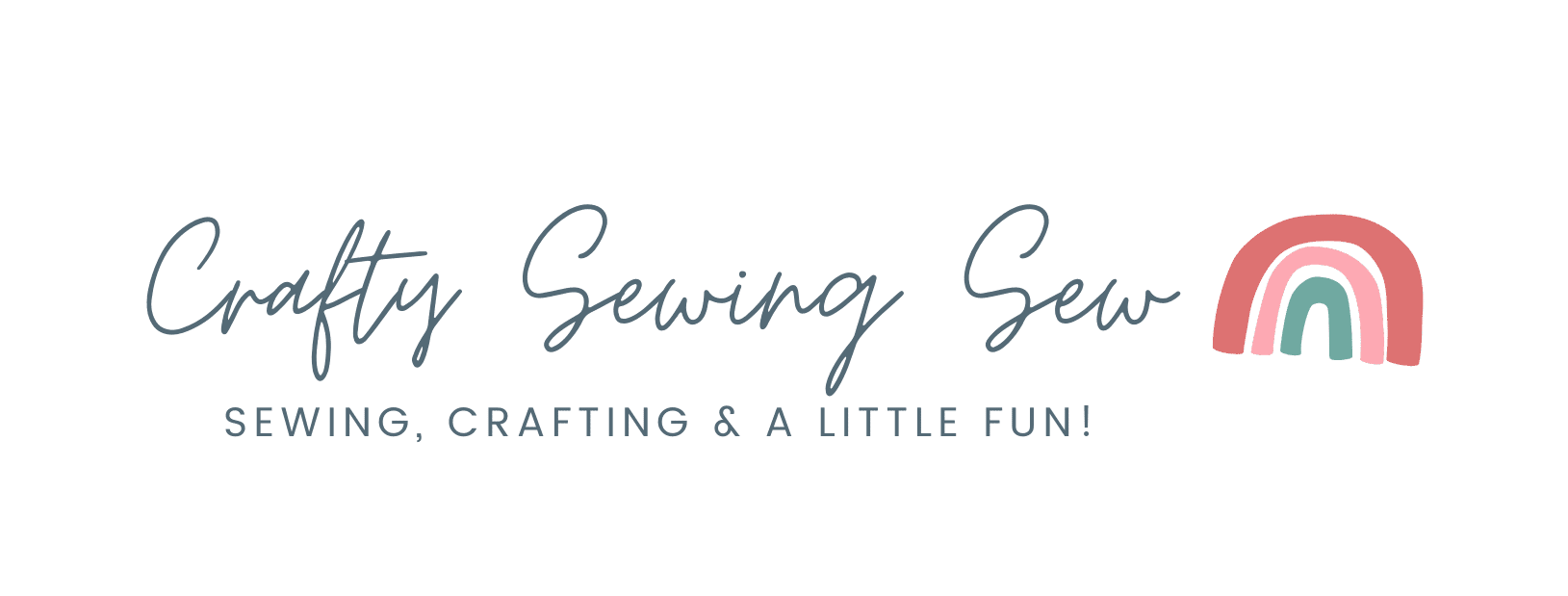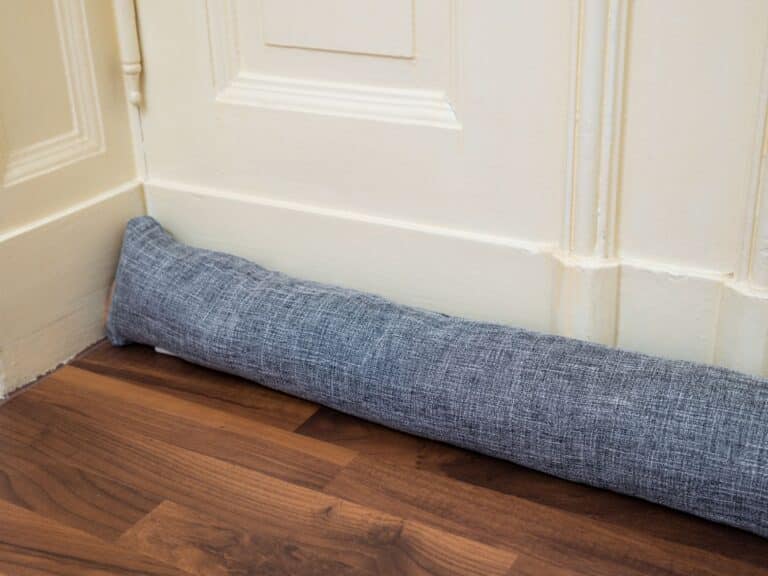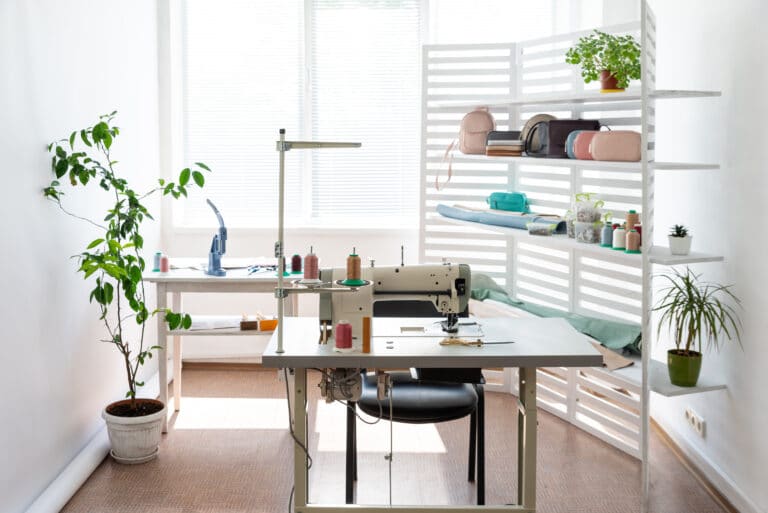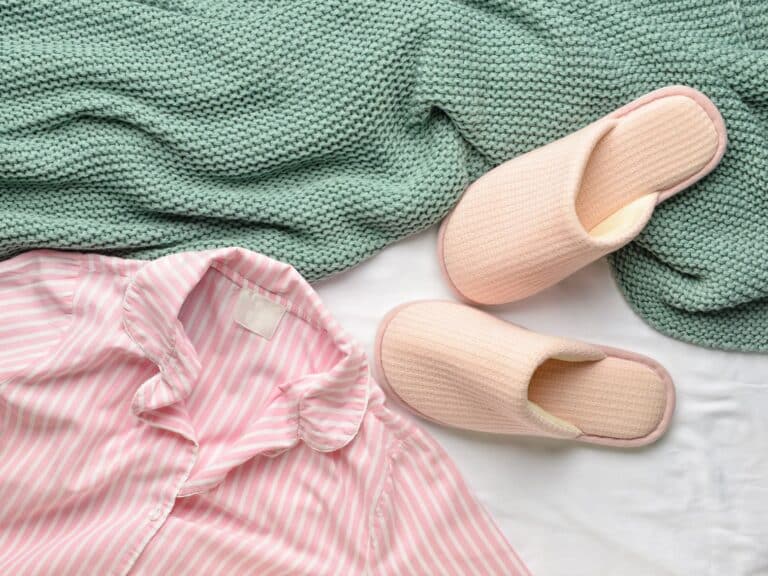Is It Worth Buying An Overlocker And Why!
Some of the links below are affiliate links. As an Amazon Associate I earn from qualifying purchases. This means that, at zero cost to you, I will earn an affiliate commission if you click through the link and finalize a purchase.
Overlockers can be hard to get the grasp of, harder to thread and an extra expense in the sewing room but there are also a lot of good reasons for having an overlocker.
While they are scary and can be a little expensive they also can give you an additional level of neat edges, ease of use on stretch fabrics and even are great for hemming. But you might be wondering whether or not they are worth buying.
Overlockers are worth buying if you intend to make lots of clothing, sew with stretch fabrics and make professional-looking projects. Overlockers are not worth using for those who finish their seams with bindings or make home decors that don’t require overlocked seams.
In this article, I am going to talk about what an overlocker is, what it does and whether I think it is worth buying or not.
What Is An Overlocker?
An overlocker is a single standing machine that works similar to a sewing machine where thread and fabric are connected but they connect in a different way.
Overlockers are machines that are used to overlock seams and raw edges of the fabric to neaten the edge or to prevent the fabric from fraying.
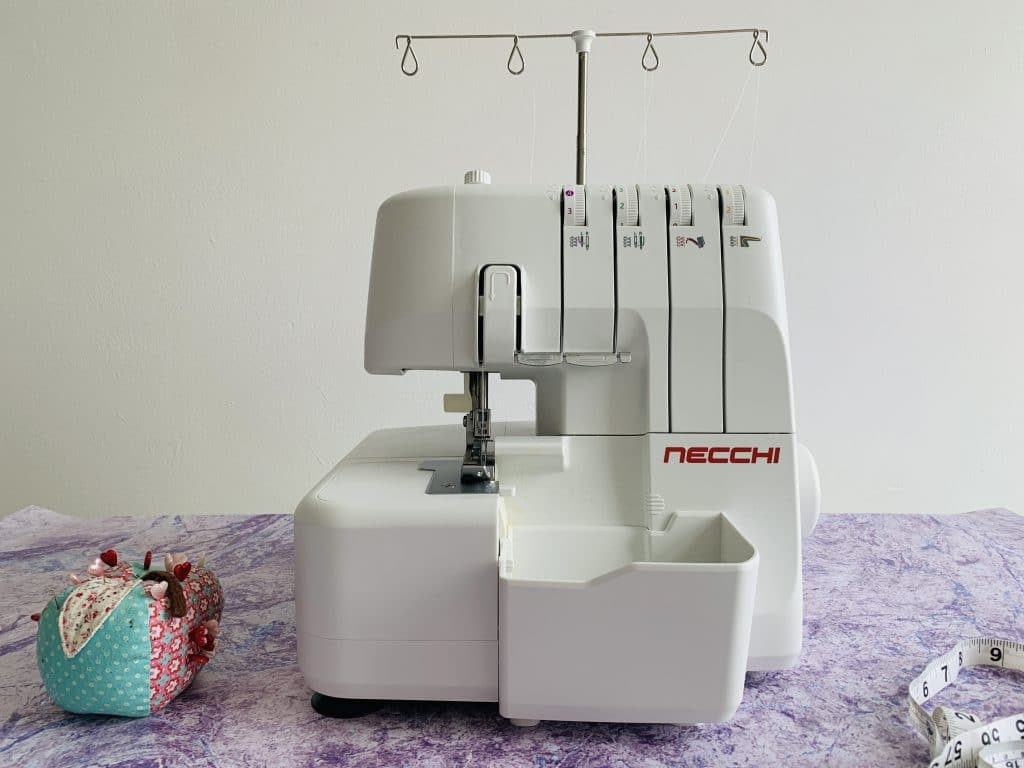
To overlock the edge it takes anything for 3-5 threads and winds and twists them around each other and the fabric to create a pattern. This is usually done on the seam of a fabric and raw edges.
The machine works very similarly to a sewing machine in the sense that the fabric is fed through under a foot and twin needles doing the sewing part. The other part of an overlocker is that it can have a setting to cut and neaten the fabric as it sews or it can leave it raw.
An overlocker is also controlled by a foot pedal and much like a sewing machine the harder you press the faster it will go.
What Are Overlockers Good For?
Overlockers are good for a number of sewing projects from clothing to home decors and more. The most popular use of an overlocker is for those who are making their own clothing.
You can use an overlocker for hemming seams, hemming garments, neatening edges of a project or garment, preventing frayed edges and sewing seams in a stretchy fabric such as jersey or lycra.
Advantages Of An Overlocker
The advantages to using an overlocker are endless and honestly something I could talk about all day!
Great For Fraying Fabrics
Overlockers are perfect for putting a stop to frayed edges on fabrics. There can be nothing more frustrating than a fraying fabric and so you would happily do anything to stop that.

Using an overlocker on raw edges of fabrics and seams is a perfect way of being able to keep fabrics from fraying while being used, washed and worn.
An overlocker uses 3 or more threads to wrap around the edge of the fabric is creates a solid cover over the fibres and weave of the fabric so it makes it hard for the fabric to simply fall apart and fray.
Perfect For Neat Seams
If you like to make sure that all your seams are neatly edged and cut down then an overlocker is perfect for you. They are perfect for hemming seams and raw edges and stopping fabrics from fraying.
They are mostly popular for use on clothing where there is a lot of use, movement and washing that happens which can both loosen the fibres of the fabric and alter the garment in certain circumstances.
Ease Of Use
When I say ease of use I mean you have a separate machine already set up ready to neaten off the edges of a seam or raw edge of the fabric you don’t have to change the settings of your main machine.
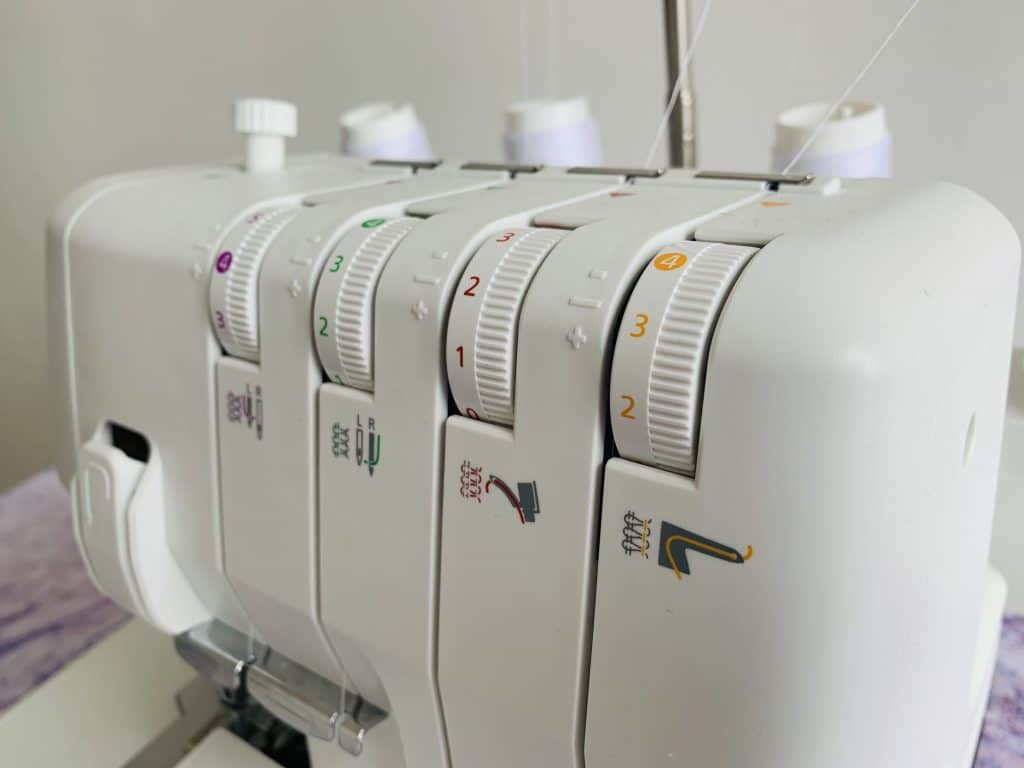
This means you can leave your main sewing machine on the settings for sewing together and the pieces and then you can use the overlocker to hem and neaten of your seam edges.
Making your sewing experience more fluid, with less friction and easier to complete a project without having to do too many manual changes.
Disadvantages Of An Overlocker
While overlockers have a lot to offer there are of course some disadvantages.
Harder To Learn To Use
Though overlockers are a great advantage to the sewing room they are a little more complex to set up, thread and use. This is something you will get used to but can be scary and off putting for beginners.

They are more complex to thread up which is where most people get stuck and confused. Though there are a number of video and blog post style tutorials on the internet that can help with this.
Another Machine To House
If like me you don’t have a dedicated sewing space and like to work in different rooms within the house when you can you might find having both a sewing machine and an overlocker a little too much.
It can get a little cramped if you have to take out both machines each time you do any sewing and so not worth buying if you are limited on space.
That is not to say if you don’t have a dedicated sewing space and you use your dining room table that you can’t have an overlocker. You definitely can but for some working, in tighter spaces and conditions it may be a little more of a squeeze.
A Sewing Machine Can Do The Same Thing
As I mentioned above the way an overlocker works is by using 3 or more threads to intertwine and wrap around the edge of the fabric, this can also be created with 1 or 2 threads with a sewing machine.
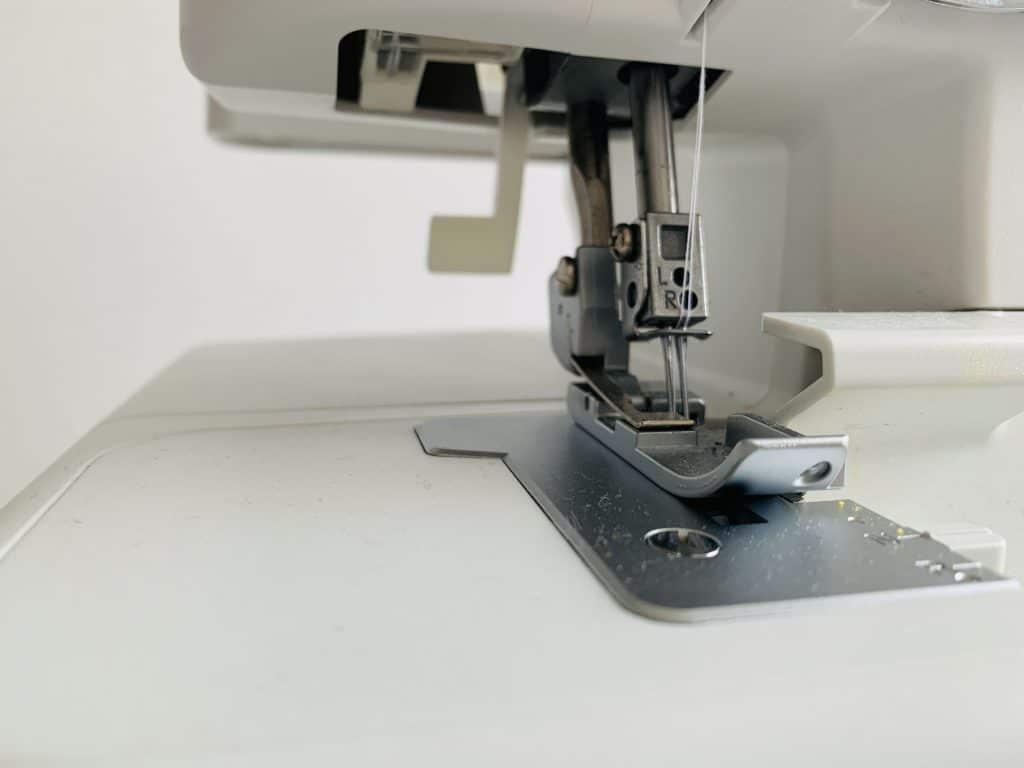
To create an overlock type stitch you can simply use a zig-zag stitch and run it just on the edge of the fabric, creating a loose casing to stop the edges from fraying as much.
While you can recreate the overlock edge it isn’t as advanced or thorough as an overlocker stitch is.
How Much Are Overlockers?
Depending on whether you are looking at buying a domestic or industrial. Though if you are reading this article I can only assume you are buying a domestic overlocker.
In which case domestic overlockers are much more reasonable in price. Much like sewing machines, there are some which are high in the market and some which are much more reasonable and fair priced.
Cheaper Machines
Cheaper overlockers can be found by big name brands such as Brother, Janome or Singer but they are often described as clunky, hard to use and hard to thread up.
In this situation Brother has the best range of overlockers in terms of price, size and models with a number of machines getting great reputations for being beginner friendly or best cheap overlockers on the market.
You can also find great cheaper overlockers in places such as John Lewis, Aldi and Lidl. These are all either own brands or brands you may never of heard of, but this shouldn’t put you off as you can often find a great deal on these.
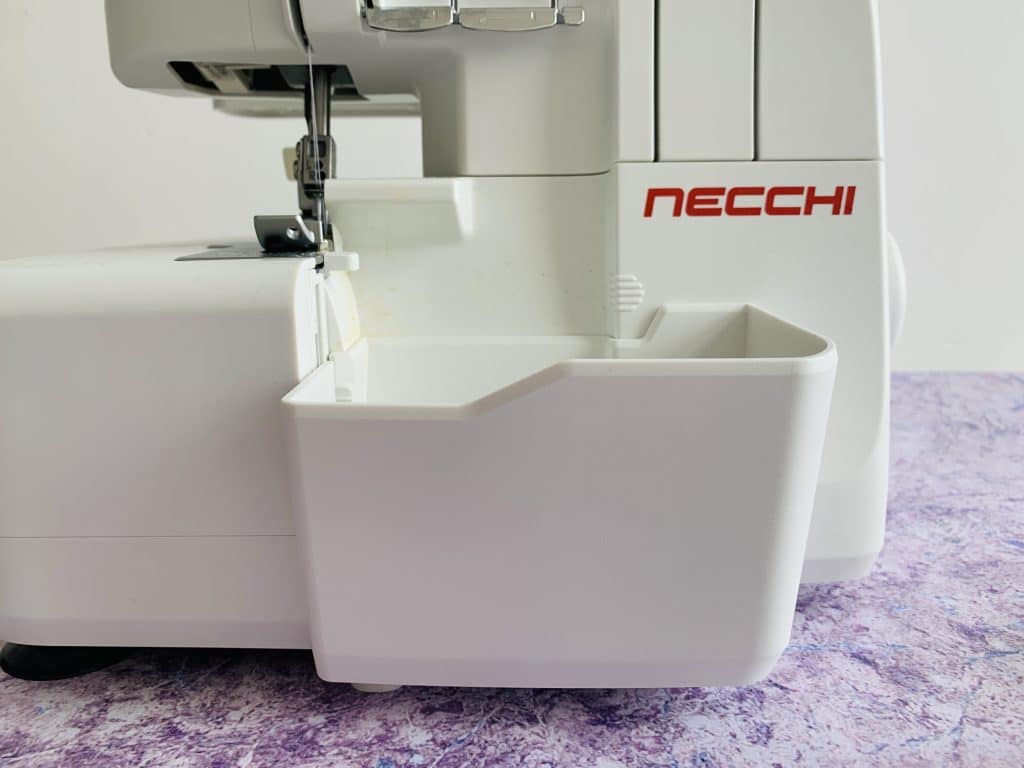
This is especially important if you are newer to sewing or at least newer to sewing with an overlocker and are still unsure on how much you will use it, how you will find using it and so on.
My first overlocker (and my current one) was actually from Aldi by a brand called Necci. It is a lovely machine, well made and made from a lovely plastic (sounds strange but it isn’t harsh or anything) it was easy to thread up first time and have found ti easy to use from then on.
Machines in this price range are going to be roughly £200-£300. While they are expensive they are much more affordable for those who are beginners, just starting out and looking to get into sewing and using an overlocker.
Mid-Range Machines
these are from brands such as Brother, Singer, Janome and more. These are higher quality built machines with more features and accessories. The cost of overlockers compared to sewing machines is slightly inflated.
For the cheaper range as you can often find a decent sewing machine around £100-£150 where as overlockers can be double that. This also happens with the mid range sewing machines and so on.
What is more interesting is that with a mid-range sewing machine you can get much more for your money depending on the brand and any deals you find. You can find you get more stitches, accessories, electronics and other parts that often make your sewing experience easier.
With overlockers there are not as many parts of the overlocker that can be different or much higher in quality. There are certain things you can look out for if you are looking to use certain materials, a mid-range or higher standard of machine may be better suited.
You might also find that mid-range overlockers are more developed, have fewer plastic features and more metal ones. They may also have different settings which are not or not as diverse on a standard overlocker.
Mid-range machines lie in the £400-£500 bracket and will be tougher, made from stronger materials will be longer-lasting and often have more adaptations and accessories included.
Top Range Machines
Top range overlockers include those which are higher than £500, these include those which fall under the category of industrial overlockers which are popular for those making costumes and need something extremely tough and hard-wearing.
Top range overlockers such as Juki are to me intense but are definitely worth buying especially if you are doing a lot of industrial style clothing.
Also if you are into making costumes, cosplay outfits or want to create a lot of home furnishings with heavy fabrics that fray easily.
Top range overlockers are perfect for those looking to create a small production line with their work and business as these are going to last much longer, be able to take on more continuous work and need fewer parts replacing frequently.
Is It Worth Buying An Overlocker?
There are a number of things to ask when looking at buying an overlocker. They can be used for a number of sewing styles and so this can suit a number of sewing skills.
I personally believe that buying an overlocker is worth it if you already make a fair amount of clothes or projects where you need to hem and overlock the edges. I also think it is worth buying an overlocker if you are getting fed up of having to change the stitches on a machine to overlock your seams and change back again for straight stitching.
Overlockers are well worth the investment even at £200-£300 price range as they can allow you to further your abilities as a new/intermediate level sewer, they can create a better and more professional edging to your seams and it is fast to use.
I also believe overlockers will provide coverage to seams and raw edges of fabric that is hard to recreate on a sewing machine. This in itself for clothing is vital as you are giving your garment better stabilisation, it will last longer through washing and wearing and it will look neater.
I would only suggest waiting or not getting an overlocker if you are making a lot of toys that don’t have fabrics that fray, won’t require neat seams or projects that have encased seams in bindings.
Personally, I would suggest waiting to buy an overlocker if you are new to sewing as they can be hard to work and thread up, so I would take the time to get used to a sewing machine first and build up confidence to then use an overlocker.
